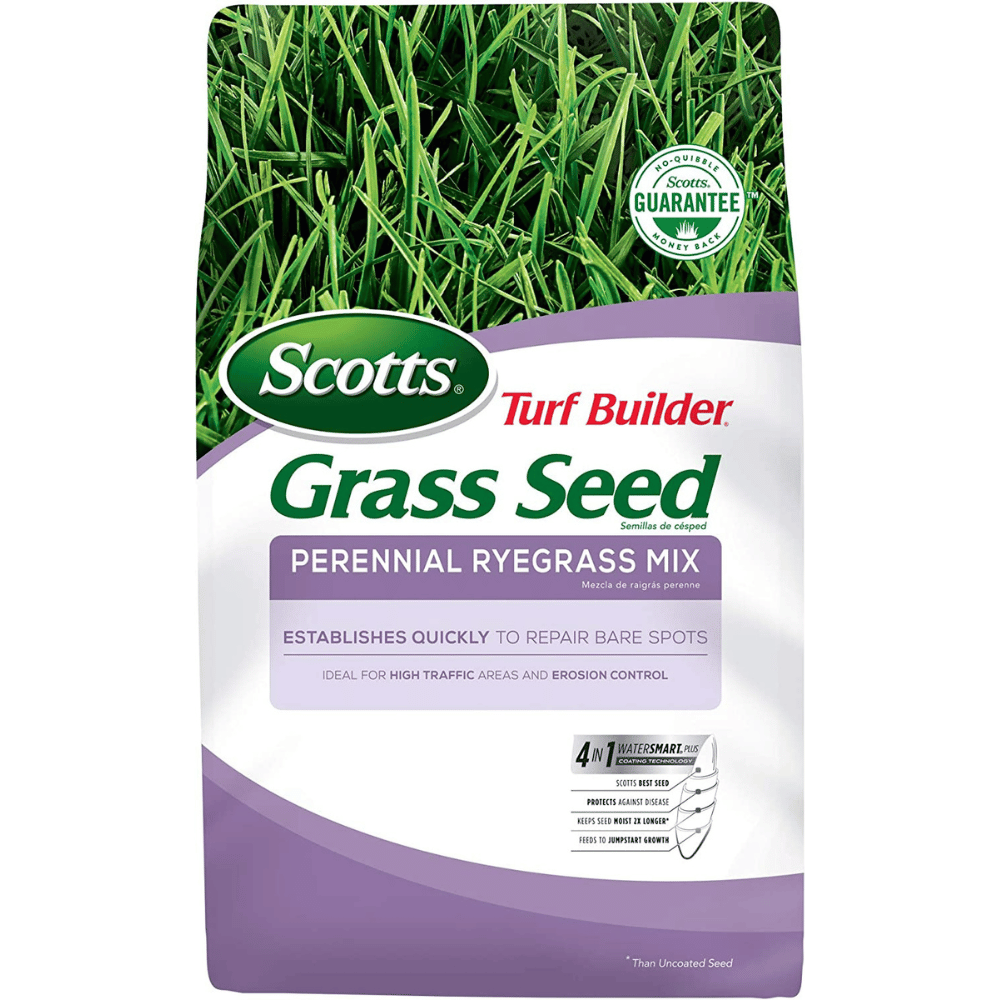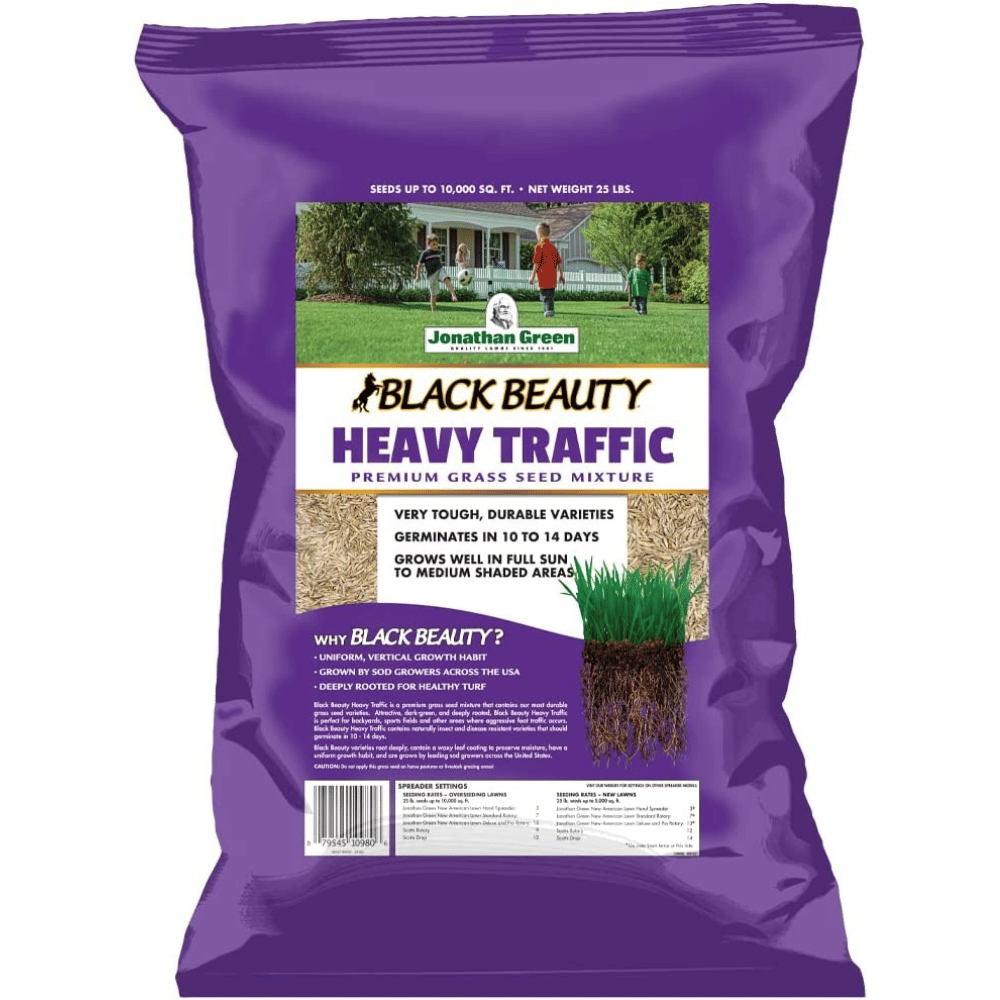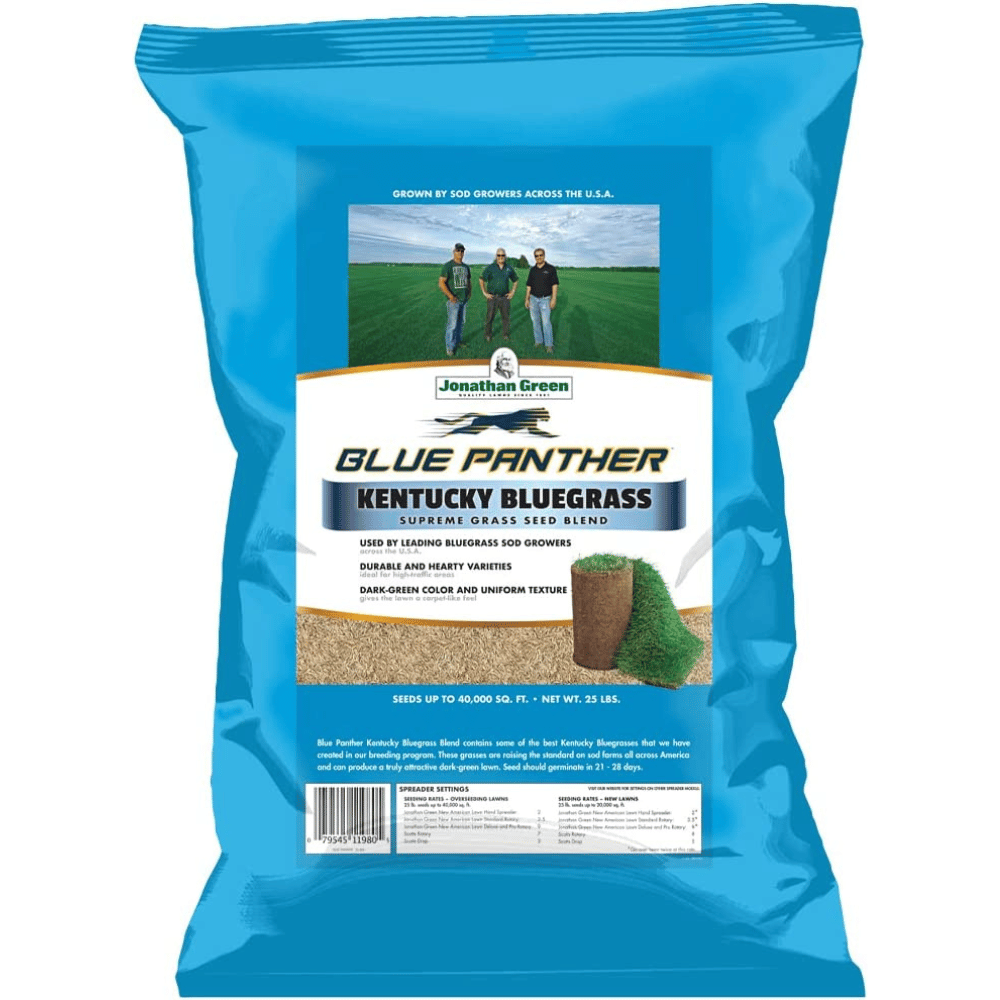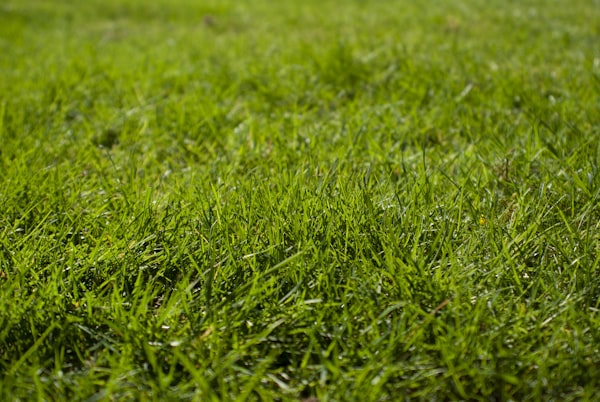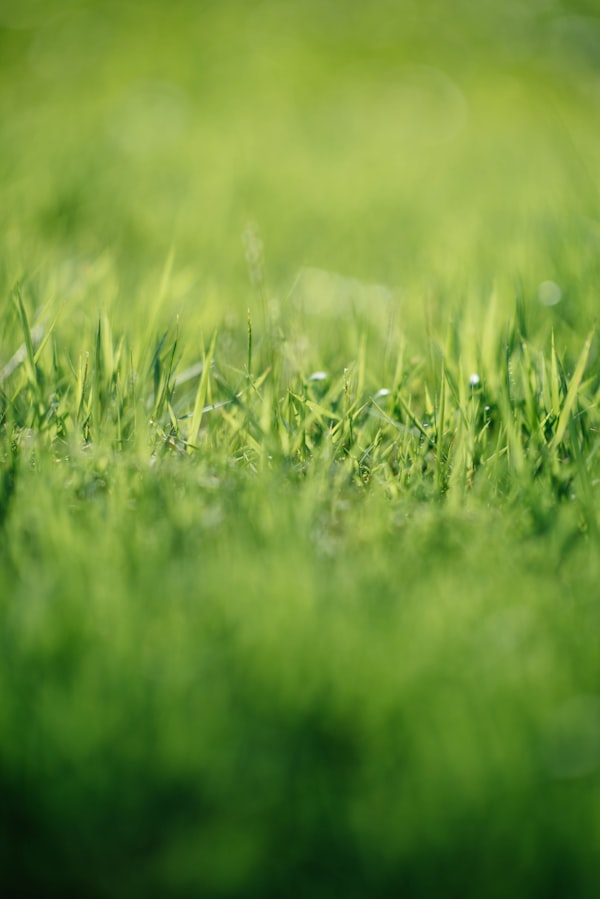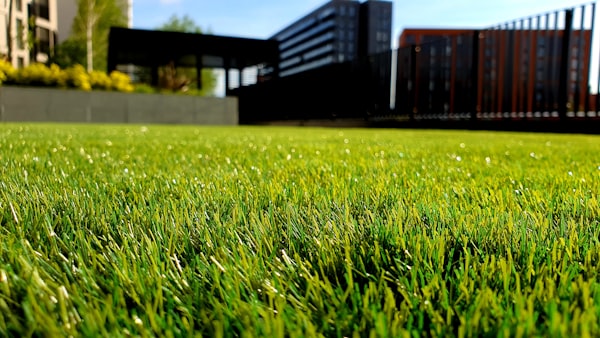With so many different grass seed varieties on the market, how do you know which one is right for your lawn? In this article, we'll provide you with some tips and recommendations for choosing the best grass seed for overseeding, so you can achieve a healthy, vibrant lawn that you'll be proud to show off.
What is overseeding, and why is it important?
Overseeding is the process of adding new grass seed to an existing grass. It is an important step in maintaining a healthy lawn, as it can help to fill in thin or bare spots, improve the color and texture of your grass, and increase its resistance to pests and disease.
Over time, lawns can become thin and patchy due to a variety of factors, including heavy foot traffic, drought, lawn disease, and pests. Overseeding is a proactive way to address these issues and improve the overall health and appearance of your lawn.
Overseeding can also help to introduce new grass varieties to your lawn, which can provide a better defense against pests and diseases, and increase the overall resilience of your lawn. Additionally, overseeding can help to reduce the amount of weeds in your lawn, as the new grass will compete with the weeds for nutrients and water.
Understanding Grass Seed Types
Before we dive into our recommendations, it's important to have a basic understanding of the different types of seed that are available. There are two main categories of grass seed: cool-season and warm-season. Cool-season grasses, which include varieties like Kentucky bluegrass, fescue, and ryegrass, thrive in cooler temperatures and are well-suited for northern regions of the United States. Warm-season grasses, which include varieties like Bermuda grass, zoysia, and St. Augustine grass, thrive in warmer temperatures and are better suited for southern regions. When overseeding, it's important to choose a grass seed that is appropriate for your climate and soil type.
Best Grass Seed for Cool Season Lawns
If you live in a northern region with cooler temperatures, there are several cool-season grass seed varieties that are well-suited for overseeding. Here are our top recommendations:
Kentucky Bluegrass: This grass seed variety is known for its fine texture, rich green color, and ability to self-repair. It's a popular choice for overseeding, as it can fill in thin or bare spots quickly and create a dense, lush lawn.
Perennial Ryegrass: This grass seed variety is quick to germinate and produces a lush, green lawn with a fine texture. It's well-suited for overseeding, as it can establish quickly and help to fill in bare spots.
Fine Fescue: A tall fescue seed variety is a great choice for shady areas, as it tolerates low light conditions well. It's also drought-tolerant and can create a fine-textured lawn with a natural, wispy appearance.
Best Grass Seed for Warm Season Lawns
If you live in a southern region with warmer temperatures, there are several warm-season grass seed varieties that are well-suited for overseeding. Here are our top recommendations:
Bermuda Grass: This seed variety is known for its ability to grow quickly and withstand heavy foot traffic. It's a popular choice for overseeding, as it can help to create a dense, low-maintenance lawn with excellent heat and drought tolerance.
Zoysia Grass: This seed variety is a great choice for homeowners who want a low-maintenance lawn with a lush, dense appearance. It's well-suited for overseeding, as it can fill in thin or bare spots quickly and establish a deep root system that helps it withstand drought and heat.
St. Augustine Grass: This seed variety is a popular choice for southern regions, as it can tolerate shade, heat, and salt spray. It's a great choice for overseeding, as it can create a dense, carpet-like lawn with a lush, green appearance.
Choosing the Right Grass Seed for Your Lawn
When choosing the best grass seed for overseeding your lawn, there are several factors to consider. In addition to your climate and soil type, you'll want to consider the amount of sunlight your lawn receives, the level of foot traffic it receives, and your overall maintenance preferences. Here are some additional tips for choosing the right grass seed for your lawn:
Sunlight: If your lawn receives a lot of sunlight, you'll want to choose a grass seed variety that is well-suited for full sun. If your lawn is in a shady area, you'll want to choose a grass seed variety that can tolerate lower light conditions.
Foot Traffic: If your lawn receives a lot of foot traffic, you'll want to choose a grass seed variety that is well-suited for heavy use. Some varieties, like Bermuda grass, are particularly resilient to foot traffic and can help to create a low-maintenance, durable lawn.
Maintenance Preferences: Different grass seed varieties have different maintenance requirements. Some varieties, like fescue, require frequent watering and fertilization, while others, like zoysia, require less maintenance. Consider your overall maintenance preferences when choosing a grass seed variety.
Your Soil Type: Different grass seed varieties thrive in different soil types. Some varieties, like Bermuda grass, prefer sandy soils, while others, like fescue, prefer clay soils. Consider your soil type when choosing a grass seed variety.
How We Choose the Best Grass Seed
We take great care in selecting the best products for our customers. Our team of experts researches and analyzes various products in the market, taking into consideration factors such as quality, price, and customer reviews.
We believe that customer reviews are an essential aspect of selecting the best products. They provide valuable insights into the experiences of other customers and give us a better understanding of the product's pros and cons. Our team carefully reads through customer reviews to get a comprehensive understanding of a product's performance, durability, and overall value.
We understand that our customers expect the best products and the best service from us. That's why we take great care to ensure that every product we offer meets our high standards of quality and value. Here are our picks for the best grass seed for overseeding a lawn.
Scotts Turf Builder Ryegrass Mix
Why We Love It
Scotts Perennial Ryegrass Mix is the perfect grass for overseeding your lawn. With 3 lbs of seed, you can cover a large area in no time at all. This particular seed is one of the best for high traffic areas and erosion control, as it quickly repairs bare spots. Not only will you be able to overseed the lawn with this grass type, but you'll also be able to create a thick, dense lawn due to the amount of seed included in each bag. Using Scotts Perennial Ryegrass Mix will ensure that your lawn looks beautiful and stays healthy for years to come!
Jonathan Green Grass Seed
Why We Love It
Jonathan Green’s Black Beauty Grass Seed is the best option for overseeding lawns. This cool season grass seed provides a long lasting, lush green grass all year long. Its seed mix combination of varieties ensures vigorous growth and strong turf development that resists wear and tear from foot traffic. Additionally, Black Beauty Grass Seed will help to thicken existing lawns while providing superior protection against drought, disease, insects and weeds. With this 25 lb bag of Jonathan Green’s Black Beauty Grass Seed you can enjoy a beautiful lawn all year round without having to worry about its longevity or durability.
Scotts Bermuda Grass Seed

Scotts Turf Builder Grass Seed Bermudagrass with Fertilizer and Soil Improver, Drought-Tolerant, 4 lbs.
Why We Love It
Scotts Turf Builder Grass Seed Bermuda grass is a great option to create a new lawn from scratch. It a warm season grass that has the ability to stand up to scorching heat with its root-building nutrition, making it incredibly tough and resilient. The 4 lb bag of seed is perfect for larger yards or patches of land, as it contains enough seed for up to 2,000 square feet of coverage. The drought-tolerant quality allows the grass to remain healthy even in areas that receive little rainfall; keeping your lawn looking beautiful all year round. With this product, you can have a gorgeous lawn that will stay healthy during hot summer days and provide you with years of enjoyment.
Jonathan Kentucky Bluegrass Grass Seed
Why We Love It
Jonathan Green's Blue Panther Kentucky Bluegrass Grass Seed is an excellent choice for cool season lawns. It provides a lush, dense turf that resists insects, disease and drought. The seed is coated with a special blend of fertilizer and growth stimulants to ensure fast and even germination. With 25 lbs. of the seed, you get enough to cover up to 5,000 square feet of lawn area - perfect for large lawns or multiple smaller areas. The seed is also easy to spread with a hand seeder or rotary spreader, making it simple to install and maintain. Jonathan Green's Blue Panther Kentucky Bluegrass Grass Seed is an ideal choice for anyone looking for a beautiful cool season lawn that will last for years to come.
Overseeding a Lawn FAQ
Choosing the right grass seed for overseeding can be a daunting task, especially if you are not familiar with the different grass seed varieties available. To help you make an informed decision, we have compiled a list of frequently asked questions about overseeding and grass seed. From understanding the different types of grass seed to choosing the right one for your lawn, these questions and answers will provide you with valuable information to help you achieve a healthy, vibrant lawn.
What is overseeding, and why is it important?
Overseeding is the process of adding new grass seed to an existing lawn. It is an important step in maintaining a healthy lawn, as it can help to fill in thin or bare spots, improve the color and texture of your grass, and increase its resistance to pests and disease.
What are the different types of grass seed?
There are two main categories of grass seed: cool-season and warm-season. Cool-season grasses, which include varieties like Kentucky bluegrass, fescue, and ryegrass, thrive in cooler temperatures and are well-suited for northern regions of the United States. Warm-season grasses, which include varieties like Bermuda grass, zoysia, and St. Augustine grass, thrive in warmer temperatures and are better suited for southern regions.
How do I know which grass seed is right for my lawn?
When choosing a grass seed for overseeding, you should consider your climate and soil type, the amount of sunlight your lawn receives, the level of foot traffic it receives, and your overall maintenance preferences.
Can I overseed my lawn anytime during the year?
While overseeding can be done at different times of the year, the best time to consider overseeding a lawn is in the fall. In most regions of the United States, the cooler temperatures and increased rainfall during the fall season provide optimal growing conditions for grass seed. Additionally, weeds tend to be less active during the fall, which can help to prevent competition for nutrients and water.
Overseeding in the spring or summer is also possible, but it can be more challenging due to the warmer temperatures and drier weather conditions. The soil may dry out faster, making it more difficult for grass seed to germinate and establish. If you choose to overseed a lawn in the spring or summer, be sure to water your lawn frequently and take extra care to ensure that the grass seed stays moist.
In general, the best time to overseed your lawn depends on your climate and growing conditions. If you're unsure when to overseed your lawn, consult with a local lawn care professional or nursery for advice.
How do I prepare my lawn for overseeding?
Preparing your lawn properly is essential to ensure that your overseeding project is successful. Here are the steps to follow when preparing your lawn for overseeding:
- Mow the grass: Start by mowing your lawn shorter than you normally would. This will make it easier for the grass seed to come in contact with the soil.
- Remove debris: Use a rake or leaf blower to remove any debris, thatch, or dead grass from your lawn. This will allow the grass seed to make direct contact with the soil.
- Aerate your lawn: Use a lawn aerator to create small holes in the soil. This will help to promote good seed-to-soil contact and allow the grass seed to germinate more easily.
- Fertilize your lawn: Apply a high-phosphorus fertilizer to your lawn. This will help to promote root growth and support the establishment of the new grass seed.
- Water your lawn: Water the lawn thoroughly a day or two before overseeding. This will help to moisten the soil and prepare it for the new grass seed.
Once you have completed these steps, you are ready to begin overseeding your lawn. Be sure to follow the manufacturer's instructions for the appropriate application rate and method. After overseeding, keep the soil moist by watering your lawn once or twice a day for about 10-15 minutes each time. With proper care and maintenance, you can enjoy a healthy, vibrant lawn that you'll be proud to show off.
How much grass seed do I need to overseed my lawn?
The amount of grass seed you need will depend on the size of your lawn and the extent of overseeding required. As a general rule of thumb, you should aim to apply one pound of grass seed per 250 square feet of lawn.
How do I apply grass seed to my lawn?
Grass seed can be applied using a spreader or by hand. Be sure to follow the manufacturer's instructions for the appropriate application rate. If you have a large area see our picks for some of the best fertilizer/seed spreaders to use for overseeding.
How often should I water my overseeded lawn?
After overseeding, it is important to keep the soil moist to promote germination. Water your lawn once or twice a day for about 10-15 minutes each time, depending on the weather conditions.
How long does it take for grass to grow?
The amount of time it takes for grass seed to germinate depends on several factors, including the variety of grass seed, the environmental conditions, and the quality of the seed. In general, most grass seed varieties will germinate within 7-14 days.
Factors such as temperature, moisture, and sunlight can affect the germination rate and time of grass seed. The optimal temperature for grass seed germination is between 60-75°F (15-24°C), with a consistent level of moisture in the soil. Sunlight is also important, as grass seed needs some light to germinate. However, too much direct sunlight can cause the soil to dry out too quickly, which can hinder germination.
It's important to keep the soil moist during the germination process to ensure that the seeds are getting the water they need to grow. This typically involves watering the area where the grass seed has been planted several times a day for the first few weeks. As the grass seedlings begin to establish, you can gradually reduce the frequency of watering.
It's important to note that different grass seed varieties have different germination rates, so be sure to check the seed package or consult with a lawn care professional for specific recommendations on your chosen grass seed variety. With proper care and attention, your grass seed should begin to germinate within a week or two, and your lawn will begin to look lush and vibrant in no time.
When can I mow my overseeded lawn?
After overseeding, it's important to wait until the new grass has reached a height of at least 3 inches before mowing. This allows the grass seedlings to establish a strong root system and ensures that they are not damaged during mowing.
When you do mow the lawn, it's important to use a sharp mower blade and set the blade height to the highest setting. This will help to avoid damaging the new grass seedlings and ensure that they continue to grow and establish properly.
It's also important to avoid cutting too much of the grass blade off during the first few mowings. Instead, aim to remove only the top one-third of the grass blade each time you mow. This will help to prevent stress on the new grass seedlings and encourage healthy growth.
Overall, mowing your overseeded lawn is an important part of the maintenance process, but it's important to wait until the new grass has established before you begin. By following these guidelines, you can help to ensure that your new grass seedlings grow and thrive, and you can enjoy a healthy, lush lawn for years to come.
How often should I fertilize my overseeded lawn?
Fertilization requirements will vary depending on the type of grass seed and your maintenance preferences. As a general rule of thumb, you should fertilize your lawn every 6-8 weeks during the growing season. Be sure to follow the manufacturer's instructions for the appropriate application rate.
Conclusion
Choosing the best grass seed for overseeding your lawn can be a challenging task, but with the right information and some careful consideration, you can find the perfect variety to create a healthy, vibrant lawn. Remember to choose a grass seed variety that is well-suited for your climate and soil type, and consider factors like sunlight, foot traffic, and maintenance preferences. With the right grass seed and a little bit of care, you can achieve a lush, beautiful lawn that will be the envy of your neighborhood.


